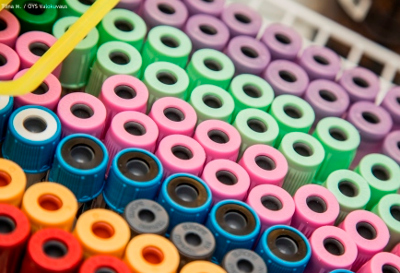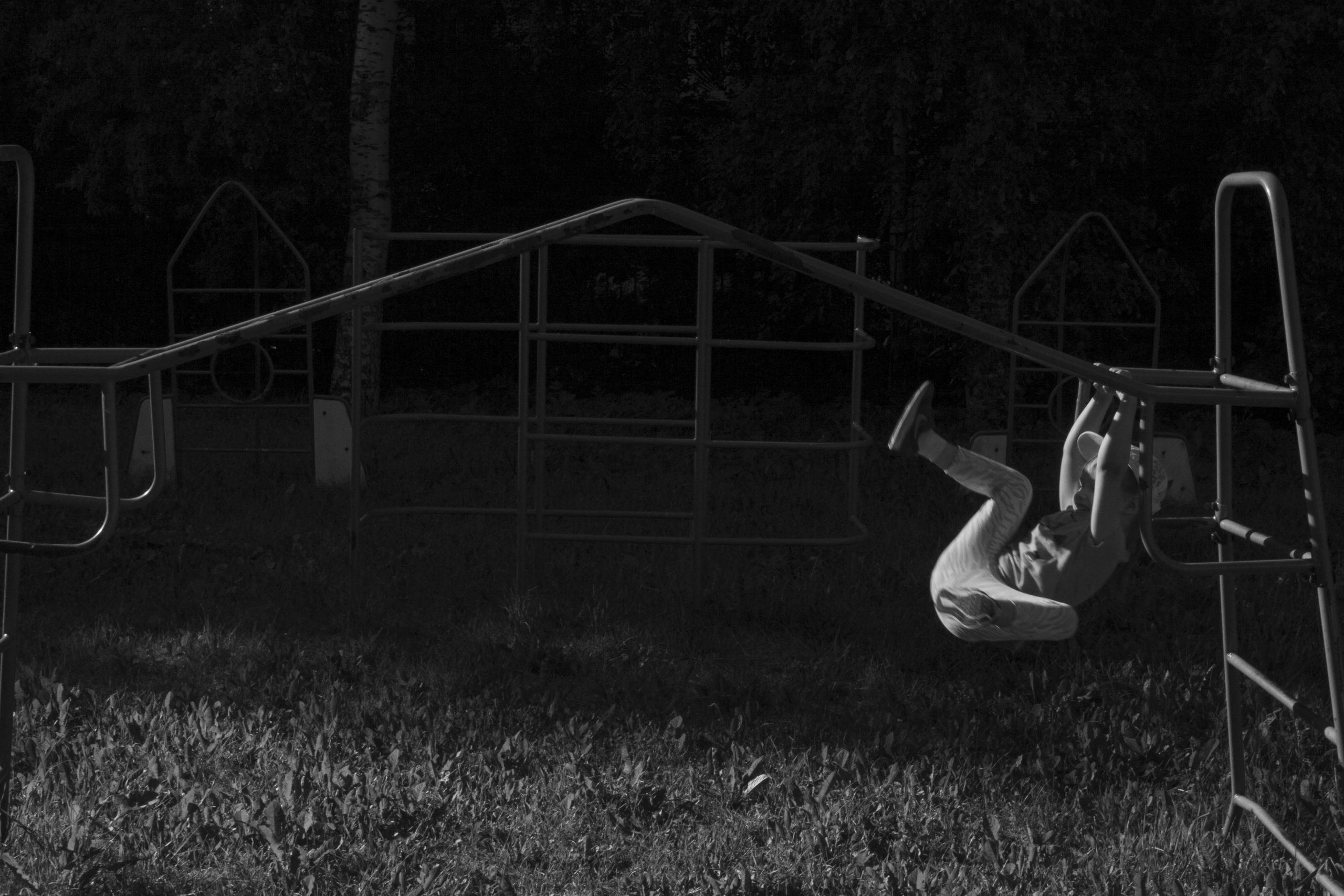Collecting, depositing and reusing human-derived material on mass scale entails the problem that the relationship between the physician-scientist and the patient-donor becomes ever more distant and superficial. Meanwhile, informed consent may begin to seem too restrictive and cumbersome a practice to realize – a direction that the Finnish biobanking activities are now seeming to take.
The EU General Data Protection Regulation took effect in May 2018. According to the regulation, citizens’ health information is particularly sensitive, and it is subject to more strict data protection rules than ordinary personal data. Meanwhile in Finland, alongside ongoing political hurdles of the Social Welfare and Health Care Reform, a new act regarding the secondary use of health and social data is under preparation. This new regulation proposes that citizens’ health and social welfare data could be more easily used in surveillance, research, compilation of statistics and innovation activities. The Finnish health sector is facing other reforms, too: there will be amendments in the Biobank Act, and legislation concerning the establishment of the Genome Center and the Comprehensive Cancer Center Finland is afoot.
All the aforementioned national bills involve engagements between patients, medical research, health care and the commercialization potential of the health sector. Together the patients, care, research and the political and economic value systems form a bundle that is crucial to both individual citizens and societal actors. No matter from which perspective you view the health sector, the questions of money, trust, people’s personal well-being and ability to work and act always are at stake. The aforementioned legal reforms are also motivated by international competition in medical research and drug development as well as the organization and provision of health services.
Two particular tensions underlie contemporary health issues. On the one hand, without well-organized health services and ambitious medical research citizens’ diseases and suffering cannot be properly treated. On the other hand, the services and research require patients’ participation in the conduct of care and research. The latter goes often unnoticed as discourses and debates focus on health sector innovations and development. Research shows that Finns are trustful and positive towards medicine (Finnish Science Barometer 2016). However, in developing medicine and thereby also helping the Health Sector Growth Strategy (2016) that was included in Prime Minister Juha Sipilä’s government programme, patients’ understanding of their involvement and role in these practices has received minimal attention.
In this brief analysis, my purpose is to address the evident yet undervalued role of patients in biomedical research.
In this brief analysis, my purpose is to address the evident yet undervalued role of patients in biomedical research. Drawing on my recent ethnographic research (Meskus 2018) on the challenges and promises of stem cell science in future health care, I want to discuss how patients account for the use of the blood and tissue samples they have donated to biomedical research. In addition, I observe how informed consent, the ethical cornerstone of medical research, has worked in two stem cell research projects that model cardiac diseases.
The heart disease patients and healthy control subjects whom I interviewed for my research had donated a tissue sample to be turned into stem cell lines in the research laboratory. These cell lines were primarily grown to model heart diseases and test chemical compounds for disease treatment. Based on my research results, I argue that patients typically think they are donating cells and tissue for a certain research purpose: for research on the illness they themselves carry and suffer from. This is so despite the fact that the consent forms patients sign before becoming tissue donors often clearly indicate that the cell lines can be used also for other purposes in research and development.
Tissue donors’ trust in medical research is often based on an illusion of a concrete and limited research object, which is related to their own health concern. This is in significant contradiction to current aims that lie beneath current biobank activities. The biobank regulation that is under preparation aims to secure that biological material of human origin can and shall be collected en masse for yet undefined experimental, clinical and commercial purposes (Snell, 2016).
Research needs patient samples
Certain features in the health discourse are becoming increasingly common. Firstly, the legal reforms and the development of the field are observed from the point of view of boosting the national health sector and making it more profitable. Secondly, it is often suggested that the biological samples received from patients bear value that compares to raw material – a potential that requires systems such as biobanks and national databases to be realized. The actual surplus value is produced by collecting, standardizing, analyzing and upgrading the material together with patient data, using different methods (Tarkkala, forthcoming). “From an ore pile to a national treasure” (Kahri, 2018) is one way of expressing the reasoning behind current endeavors to enhance and take advantage of the biological materials that patients donate.
However, without the donated samples from patients and related personal data there is no (human) material to study. Experimental and clinical biomedical research is fundamentally dependent on the “raw materials”, that is, the existing sample collections and new samples collected for research projects. Patients are the source of the original biological material. Therefore, it is important to take into account their views as well as the grounds of their trust in clinical research and care.
A patient, who has donated her or his tissue or blood, is an invisible drop in the ocean of data researchers work with, when biomedical research is conducted on mass-scale, as is the case in genomics research. Meanwhile biomedical research on functional tissue, as in stem cell science, is based on laborious processes of growing and testing individual, patient- or disease-specific cell lines. My patient interviewees represent the latter group: the physician-scientist who had requested a tissue sample from them had in many cases also been their physician in the hospital, making the link between clinical care and biomedical research a close one.
How did these patients view medical research? What are their thoughts on their own role in medicine, underlying the abstractions of informed consent and data and patient protection?
Participation is care for future generations
Heart disease studies have utilized patient-specific stem cell lines in modelling coronary disease, hypertrophic cardiomyopathy and long QT syndrome. Most of the patients I talked with suffered from one of these conditions. I interviewed ten people altogether (eight women and two men); the youngest of my informants was 44 at the time of our discussion and the oldest was 82. The semi-structured in-depth interviews took 1–3 hours each. We had lengthy discussions on why the patients had decided to participate in a very experimental medical study. We also talked about the purposes for which they perceived or recalled to have donated a small piece of their skin.
The heart disease patients saw that stem cell research represents “a future form of treatment”. It strives to find new cures for diseases and prolonging human life expectancy. Regardless of their educational backgrounds, the patients were very aware that biomedical research needs human-derived material to succeed, and they told me they wanted to offer this material for research purposes.
A dual reasoning directed their participation. Patients saw the general instrumental value of their donation. They thought that all arenas of medicine are dependent on voluntary cell and tissue donations. Simultaneously however, they hoped that their tissue samples would be of use particularly in developing treatment for their own heart disease, thereby helping future generations including their own offspring. The donations were understood as a specific form of care.
When collecting samples and recruiting patients for medical research, it is important to consider that as sample donors, citizens possess an understanding of both the instrumentality of human-originated biological material in basic research and, in particular, of its value in providing future care. In my research report (Meskus 2018), I suggest that this indicates how patients situate themselves on the continuum of instrumentality and care. By this, I mean to underscore the practical entanglement of instrumentality and care in peoples’ justifications for participating in biomedical studies.
What patients have in common is a perception of voluntarily consent to become an instrument of biomedical research, while at the same time hoping to provide care and a better life for future generations.
Consequently, I wish to question the assumption prevalent in bioethics that patients participate due to some form of altruism, thinking they have to “give a gift in return” for the treatment they have received. Patients participate in biomedical research on the basis of personal cognitive and ethical premises. What they have in common is a perception of voluntarily consent to become an instrument of biomedical research, while at the same time hoping to provide care and a better life for future generations.
Informed consent and the legal protection of research subjects
Informed consent is a practice in which a person voluntarily confirms his or her willingness to participate in a certain scientific study, after receiving sufficient information on all the issues that are relevant for making a decision to participate or to decline participation. In biomedical research, a written consent is usually required of the research subject.
All the patients I interviewed had received and signed a consent form several years ago: the cell samples had been taken 2009–2010, and I interviewed the patients over the course of one year in 2016–2017. Drawing up informed consent forms is challenging for stem cell researchers, because they do not know the full scope of possible uses of the cell lines. The challenge for researchers comes from wanting to ensure that the material they have collected and generated could be used widely in research, biobanking and for possible commercial purposes.
None of my interviewees recalled to have denied the further use of their sample, which they should have stated separately in the consent form. However, our discussions on the act of donation revealed that most of them thought that the use of their samples would be limited regarding both the study topic (“merely heart diseases”) and the researchers (“merely doctor X and her research team”). Significantly, this attachment to the initial purpose of the sample donation included also study participants with an educational background in the field of biomedicine. Despite having a broader understanding on sharing and reusing of cell lines in biomedicine, also they admitted having thought of donating only to heart disease research.
Clearly then, the informed consent procedure has its challenges. Patients may believe that their samples are used only in limited ways even though stated otherwise in the consent form. Meanwhile researchers wish to secure as broad consent as possible to be able to use this valuable, disease-specific material of human origin also for study topics not yet known.
The issue of informed consent is a topical problem in Finland, since in the proposed new formulation of the Biobank Act, the principle of patients’ informed consent has been suggested to be abandoned. According to the bill, samples taken during treatment could be utilized in research directly based on the legislation. This so called presumed consent means that the patient has the right to refuse the use of their samples and data in biobanking activities. Without a separate refusal however, samples and data could be automatically banked for research.
Despite its problems, the informed consent procedure has been the ethical cornerstone in biomedical research since the World War II. Now, according to recent interpretations of the law by officials, biobanking activities are not scientific research per se but count as a part of its supporting infrastructure. In that case, access regulations regarding scientific research would not be necessary (HE draft for Biobank Act, 2018). According to the same interpretation, the samples collected in healthcare could be transferred to research use without the patient’s permission. Behind this interpretation lies the direct connection between the biobanking bill and one of the objectives in the Health Sector Growth Strategy, namely strengthening Finland’s competitiveness in the global competition for capitalizing on biomedical samples and data.
We should remember that patients’ consent is not merely a symbolic contract to participate in the common good but an important morale of a sample use based on trust.
We should remember that patients’ consent is not merely a symbolic contract to participate in the common good but an important morale of a sample use based on trust: according to a study, 78% of Finns consider it important to be asked for permission, should their samples be deposited in a biobank (Snell, 2016). Therefore, individual written confirmation of the donor’s willingness should not be given up without good grounds. The aims to be competitive and innovative should not be prioritized over a citizen’s right to decide on the deposit, reuse and possible commercial utilization of the biological material that originates from their own body.
Ethical approach to biomedical research includes listening to patients
Stem cell lines grown from patients’ tissue samples are important tools for scientific “craftwork” in disease-modelling and studying pathological mechanisms and drug responses. Biological samples retrieved from patients, the customers of healthcare, are at the very core of biomedical research. Simultaneously patients place trust in physician-scientists when they agree to donate body parts carrying their own DNA for research. This means that the relationship between researchers, tissue donors and the biological material is not only practical but also of ethical and political importance.
Collecting, depositing and reusing human-derived material on mass scale entails the problem that the relationship between the physician-scientist and the patient-donor becomes ever more distant and superficial. Meanwhile, informed consent may begin to seem too restrictive and cumbersome a practice to realize – a direction that the Finnish biobanking activities are now seeming to take.
My argument here is that the aspired goals of “increasing value” and “reducing waste” in biomedical research (McLeod et al., 2014) should not override respect for donors of the original material as well as their legal and data protection. More specifically, the expectations of the present government of Finland in health sector growth ought not to overlook the value of patients’ trust when developing biomedical research and innovation. The ethics of biomedical research requires sustaining the link between researchers, donors and human tissue. Asking for informed consent facilitates this link in underscoring the vital role patients play in current and future biomedicine.
Translation by Varpu Jutila.
References
Finnish Science Barometer (2016) A study of the Finns’ attitudes towards science and their opinions on scientific and technological progress. A summary. Finnish Society for Scientific Information.
HE luonnos biopankkilaiksi (2018) Hallituksen esitys eduskunnalle biopankkilaiksi, laiksi biopankkilain (688/2012) kumoamisesta sekä ihmisen elimien, kudoksien ja solujen lääketieteellisestä käytöstä annetun lain (101/2001) ja potilaan asemasta ja oikeuksista annetun lain (785/1992) muuttamisesta [Government proposal for the parliament for Biobank act].
Health Sector Growth Strategy (2016) Innovating together: Health Sector Growth Strategy for Research and Innovation Activities Roadmap for 2016–2018.
Kanta (2018) EU:n tietosuoja-asetuksen vaikutukset Kanta-palveluihin [The implications of the EU GDPR on Kanta services]. Blogi 30.05.2018.
Kahri, Pekka (2018) Sote-tietojen toissijainen käyttö [Secondary use of health and social data]. Sosiaali- ja terveysjohdon neuvottelupäivät, 6.2.2018.
Macleod, Malcolm R, Michie, Susan, Roberts, Ian et al. (2014) Biomedical research: increasing value, reducing waste. The Lancet, 383(9912), pp.101-104.
Meskus, Mianna (2018) Craft in Biomedical Research: The iPS Cell Technology and the Future of Stem Cell Science. Basingstoke & New York: Palgrave Macmillan.
Snell, Karoliina (2016) Biopankit haaveilevat oletetusta suostumuksesta [Biobanks aspire for a presumed consent]. Politiikasta.fi, 5.4.2016. Available at: https://politiikasta.fi/biopankit-haaveilevat-oletetusta-suostumuksesta/.
Tarkkala, H. (forthcoming) Reorganizing Biomedical Research: Biobanks as Conditions of Possibility for Personalized Medicine. PhD Thesis. Publications of the Faculty of Social Sciences. Helsinki: Unigrafia.







